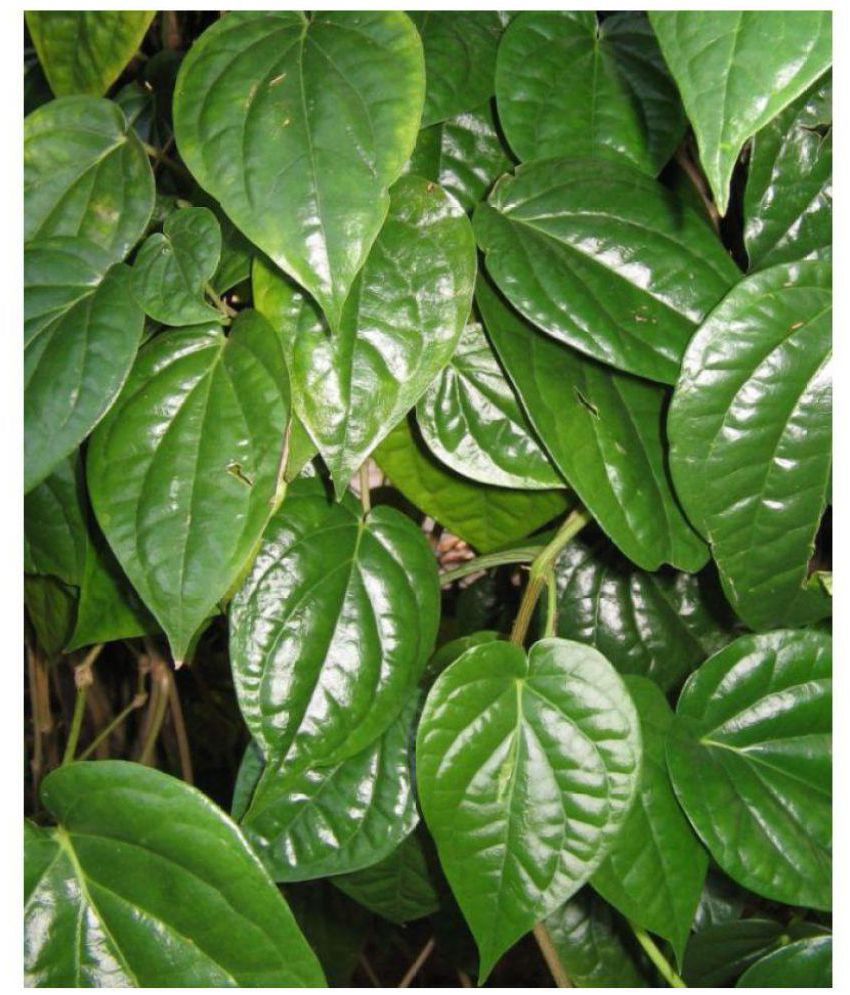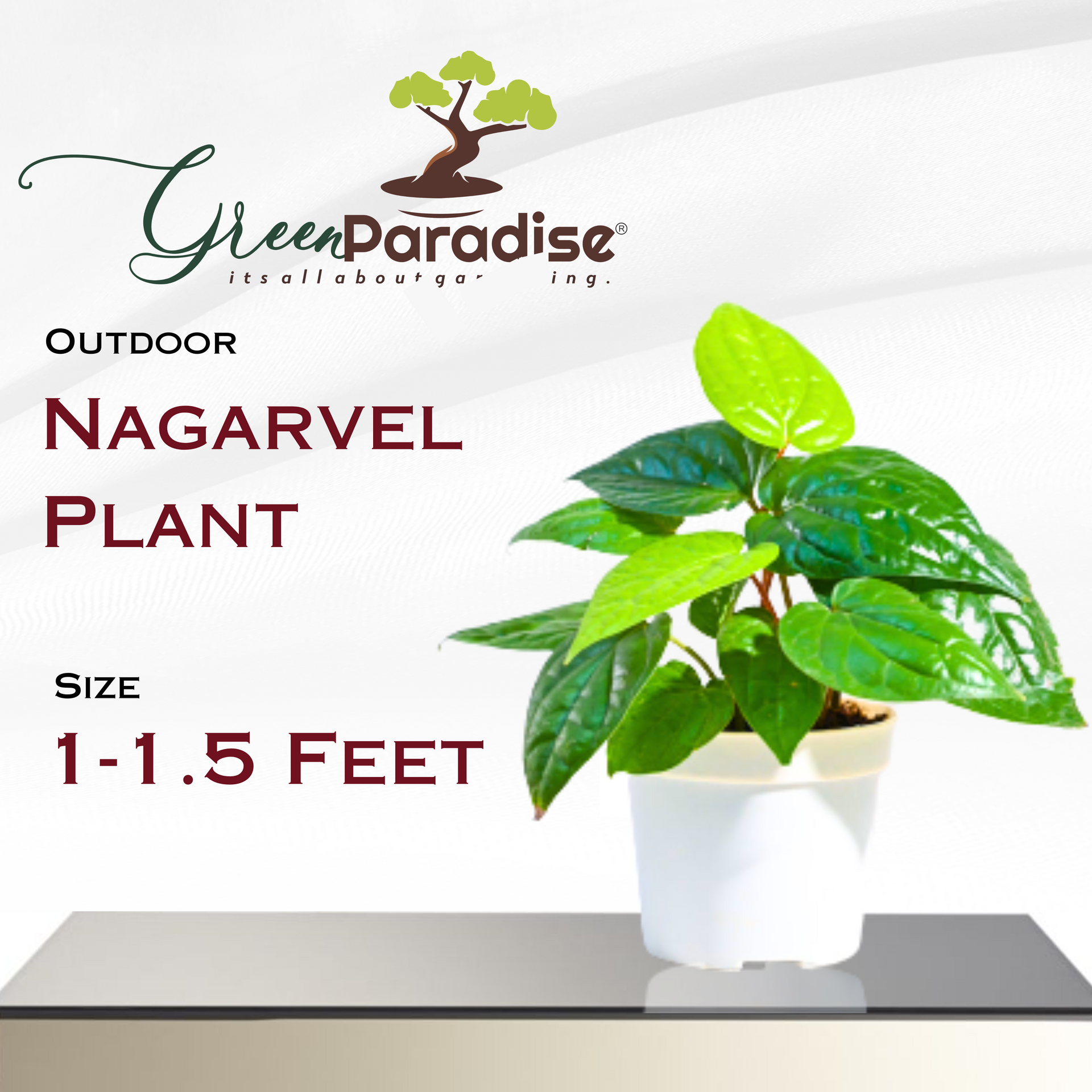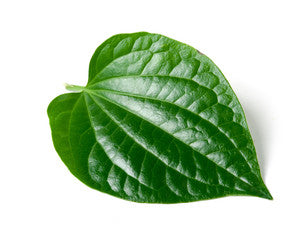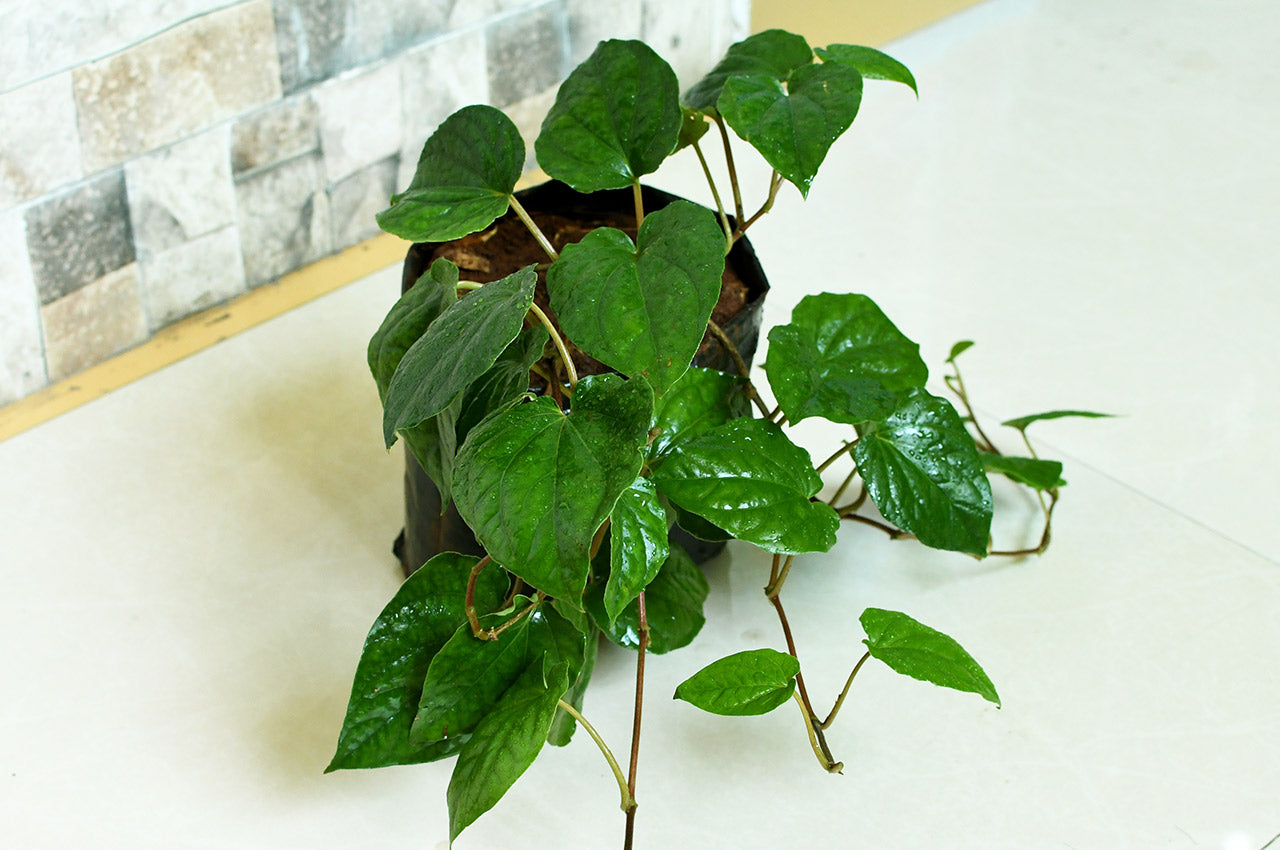



nagarvel plant Desi paan plant betel leaf plant (1 Sapling Plant)
Guaranteed Safe Checkout
Green Paradise Nagarvel Plant: Unveiling
the Enigmatic Beauty of Nature
About Nagarvel Plant
Nature never ceases to amaze us with its incredible diversity, and the Nagarvel plant stands as a testament to the intricate wonders it holds. Also known as the "Iron Tree," this captivating plant has intrigued botanists, nature enthusiasts, and curious minds alike. With its unique characteristics and enigmatic beauty, the Nagarvel plant has earned a special place in the world of flora.
Origins and Habitat
- The Nagarvel plant (Salvadora persica), native to arid regions of Africa, the Middle East, and the Indian subcontinent, has long fascinated locals and scientists alike.
- Flourishing in the most challenging of environments, including desert landscapes and rocky terrains, this plant showcases its remarkable resilience and adaptability.
- Its ability to thrive where other vegetation struggles makes it a true marvel of nature.
Physical Attributes
- Standing as an icon of strength and endurance, the Nagarvel plant is renowned for its distinctive appearance.
- It can grow up to 6 meters in height, boasting a twisted and gnarled trunk adorned with small, ovate leaves that shimmer in shades of green.
- The plant's unique branching pattern further adds to its visual intrigue, as it forms a canopy-like structure that provides shelter from the relentless sun.
Traditional and Medicinal Uses
- The Nagarvel plant has been deeply woven into the fabric of various cultures for centuries.
- It holds immense significance in traditional medicine and has been used for its healing properties.
- The twigs of the plant, often used as a natural toothbrush, have displayed remarkable antibacterial and astringent properties, making them effective tools for oral hygiene.
- Additionally, the leaves have been utilized to treat various ailments, including digestive disorders and skin conditions.
Ecological Importance
- Beyond its utility for humans, the Nagarvel plant plays a vital role in its ecosystem.
- Its presence can provide a lifeline to other flora and fauna struggling to survive in arid regions.
- The shade it offers becomes a refuge for insects, birds, and small mammals seeking respite from the scorching sun.
- Moreover, the plant's fallen leaves contribute to the enrichment of the soil, creating a microhabitat for a diverse range of organisms.
Conservation and Preservation
- In recent years, the Nagarvel plant has faced challenges due to urbanization, deforestation, and land degradation.
- Recognizing its ecological importance and cultural value, efforts have been initiated to conserve and preserve this remarkable species.
- Raising awareness about the significance of the Nagarvel plant and implementing sustainable practices are crucial steps toward ensuring its survival for generations to come.
Unveiling the Secrets to Cultivate Thriving Nagarvel
Plants
The allure of nurturing a vibrant garden teeming with lush foliage and blossoming flowers is a dream cherished by many. Among the myriad of plant species that captivate garden enthusiasts, the Nagarvel plant stands out for its stunning beauty and unique characteristics. In this article, we embark on a journey to uncover the secrets of growing a flourishing Nagarvel plant, offering insights and guidelines that will help both novice and experienced gardeners achieve success.
Understanding the Nagarvel Plant
- Before delving into the intricacies of nurturing a Nagarvel plant, it's important to become acquainted with its characteristics.
- The Nagarvel plant, scientifically known as Ficus racemosa, is an evergreen tree that belongs to the Moraceae family.
- Originating in the Indian subcontinent, it is celebrated for its distinctive aerial roots, glossy leaves, and small, fig-like fruits.
- The plant holds cultural significance in various regions and is often associated with spiritual and aesthetic symbolism.
Choosing the Perfect Location
- Selecting an appropriate location for your Nagarvel plant is paramount to its growth and vitality.
- This species thrives in tropical and subtropical climates, so it's essential to provide it with the right environment.
- Opt for a spot that receives ample sunlight, preferably partial shade, as direct sunlight can scorch its leaves.
- The plant also favors well-draining soil that retains moisture without becoming waterlogged.
Planting and Propagation
- Nagarvel plants can be grown from seeds or cuttings. If using seeds, ensure they are fresh and viable for optimal germination.
- If opting for cuttings, select healthy stems with a few leaves, and dip the cut end in a rooting hormone before planting.
- Once your chosen method is prepared, plant the seeds or cuttings in a pot or directly in the ground, maintaining proper spacing to allow for growth.
Caring for Your Nagarvel Plant
Watering:
Adequate and consistent watering is essential during the initial stages of growth. Keep the soil evenly moist but avoid over-watering, which can lead to root rot. As the plant matures, it becomes more drought-tolerant, but it's crucial to monitor its moisture levels.
Fertilization:
Nagarvel plants benefit from regular feeding with a balanced, slow-release fertilizer. Apply the fertilizer during the growing season, typically from spring to early autumn, to promote healthy foliage and fruiting.
Pruning:
Pruning is essential to maintain the shape of the plant and encourage proper growth. Trim away any dead or diseased branches and leaves, and ensure adequate aeration within the canopy.
Supporting Aerial Roots:
One of the most captivating features of the Nagarvel plant is its aerial roots. To enhance their growth and development, you can gently guide them toward the soil, allowing them to take root and contribute to the plant's stability.
Pest and Disease Management:
Keep a vigilant eye out for common pests such as aphids and mealybugs. Regularly inspect the leaves and stems, and treat any infestations promptly with appropriate insecticidal soap or horticultural oils.
Conclusion
Cultivating a Nagarvel plant is a gratifying endeavor that rewards gardeners with a magnificent tree replete with symbolism and natural elegance. By understanding the plant's needs and following the guidelines outlined in this article, you can embark on a successful journey toward growing a thriving Nagarvel plant. As you watch its glossy leaves sway in the breeze and admire its intricate aerial roots, you'll truly appreciate the beauty and wonder this remarkable plant brings to your garden.




